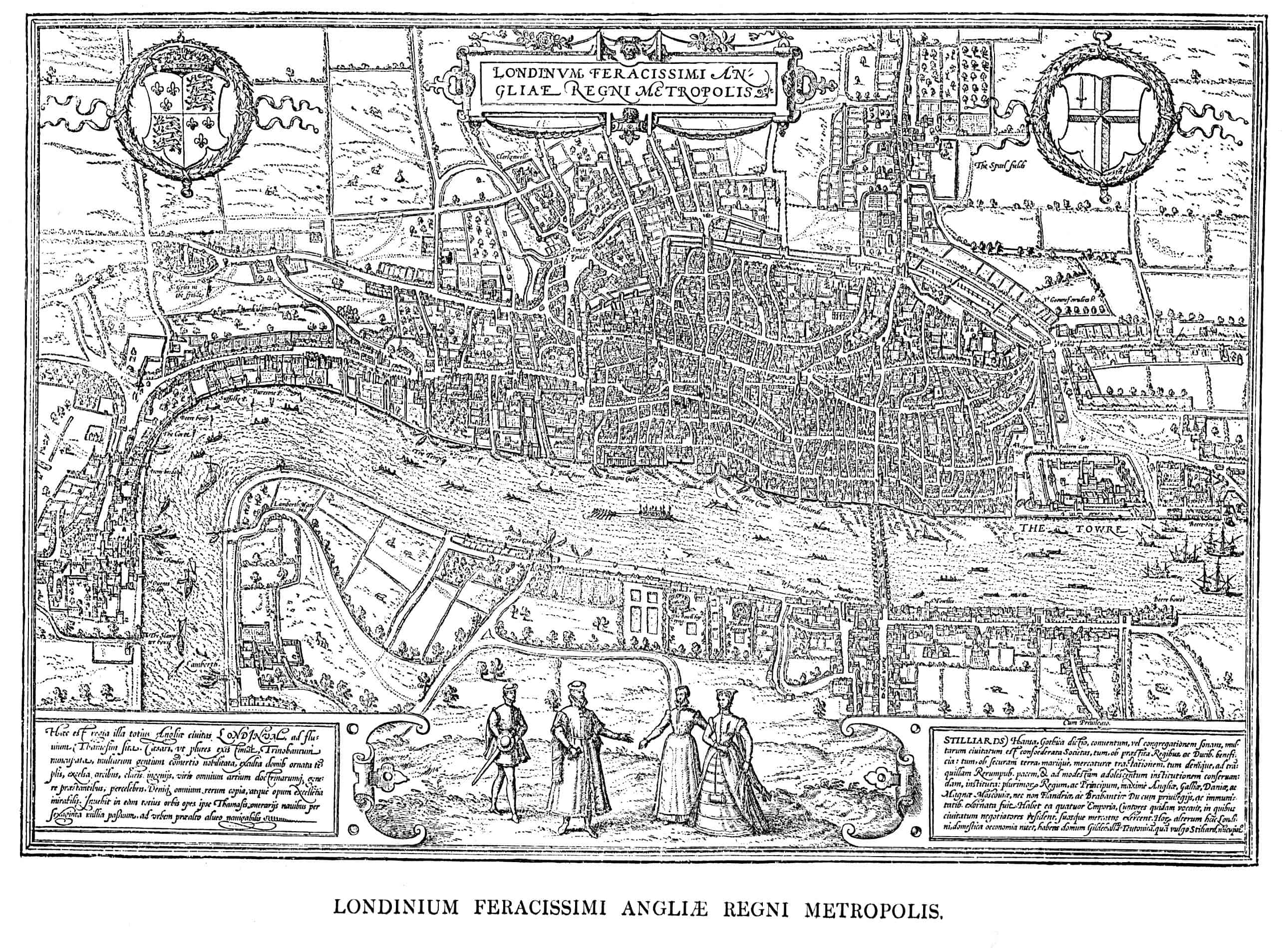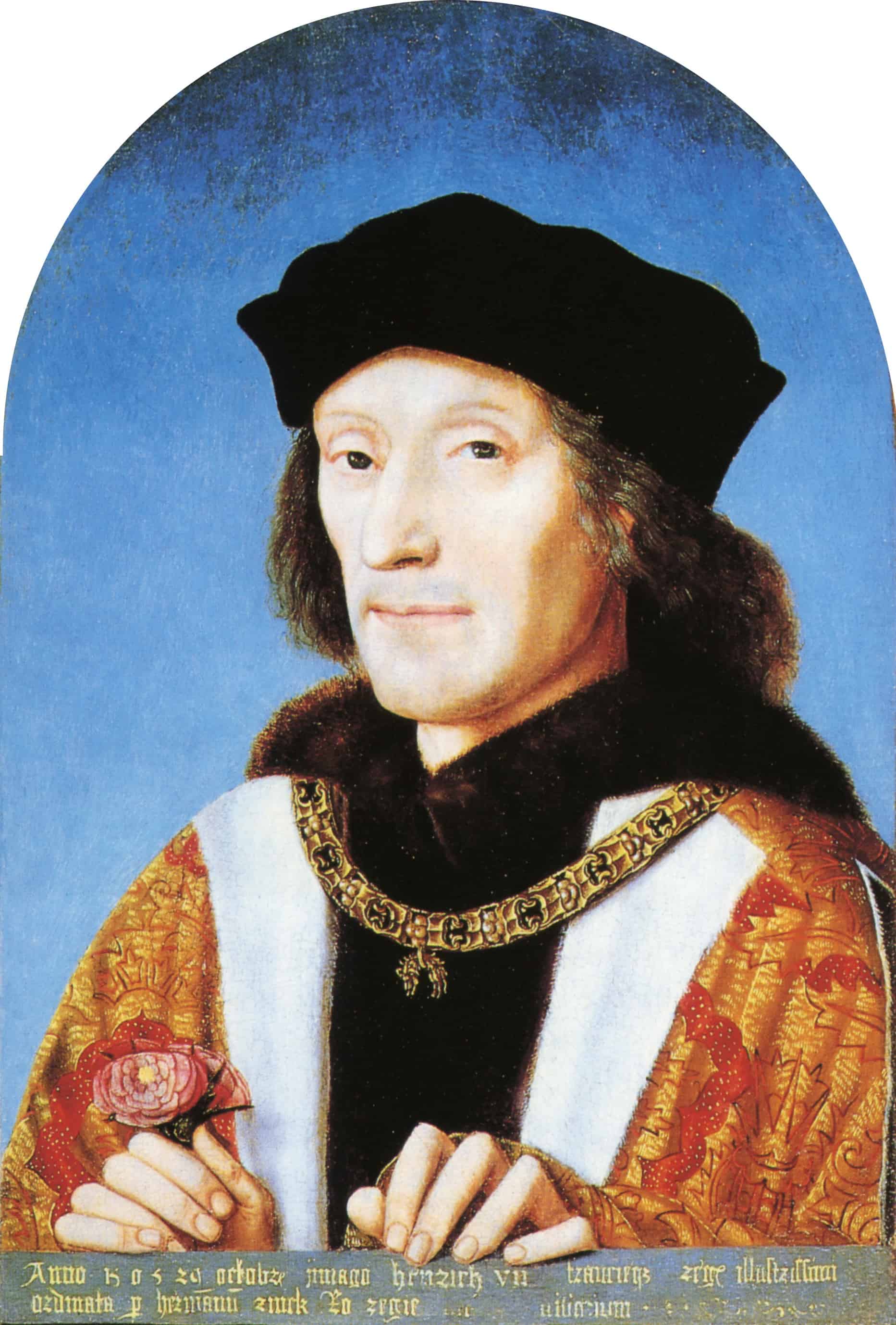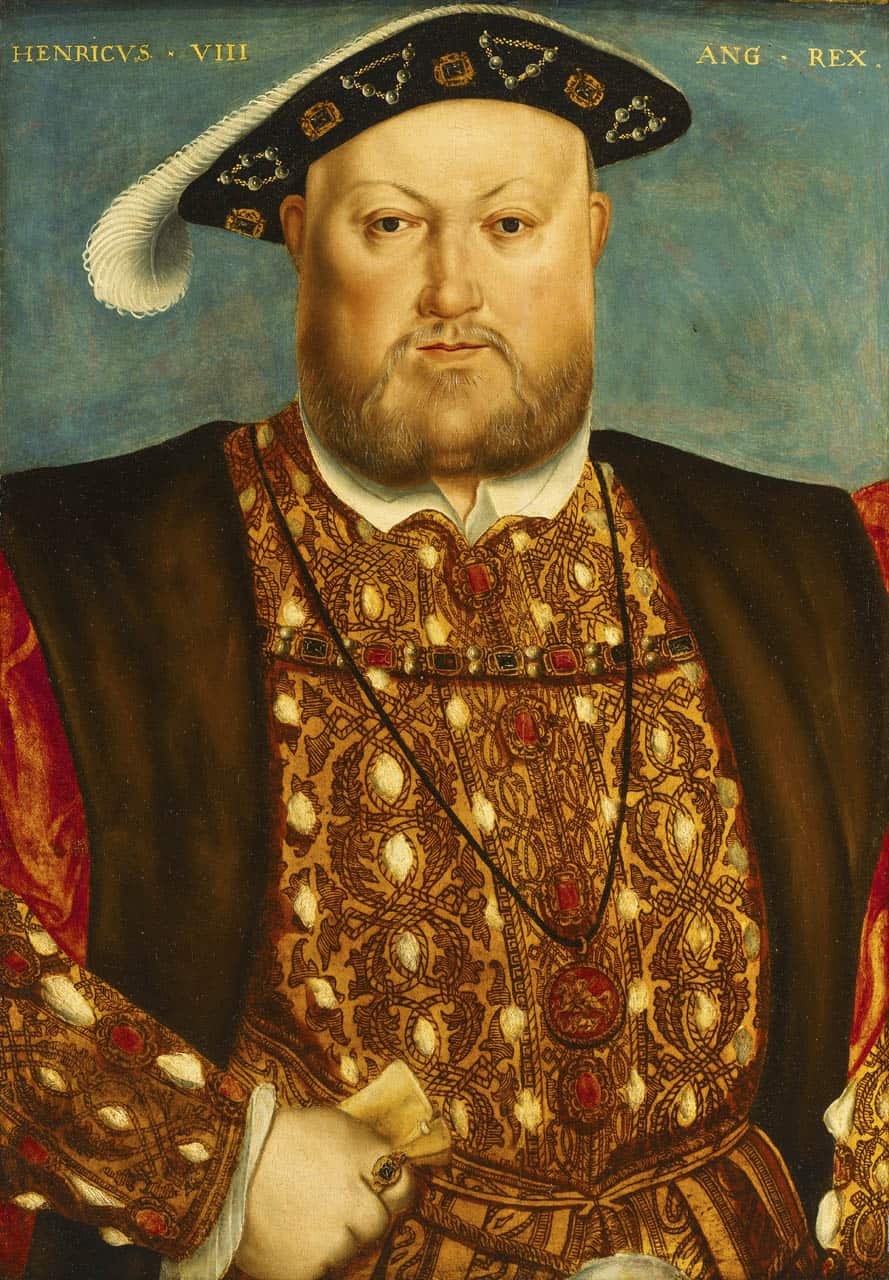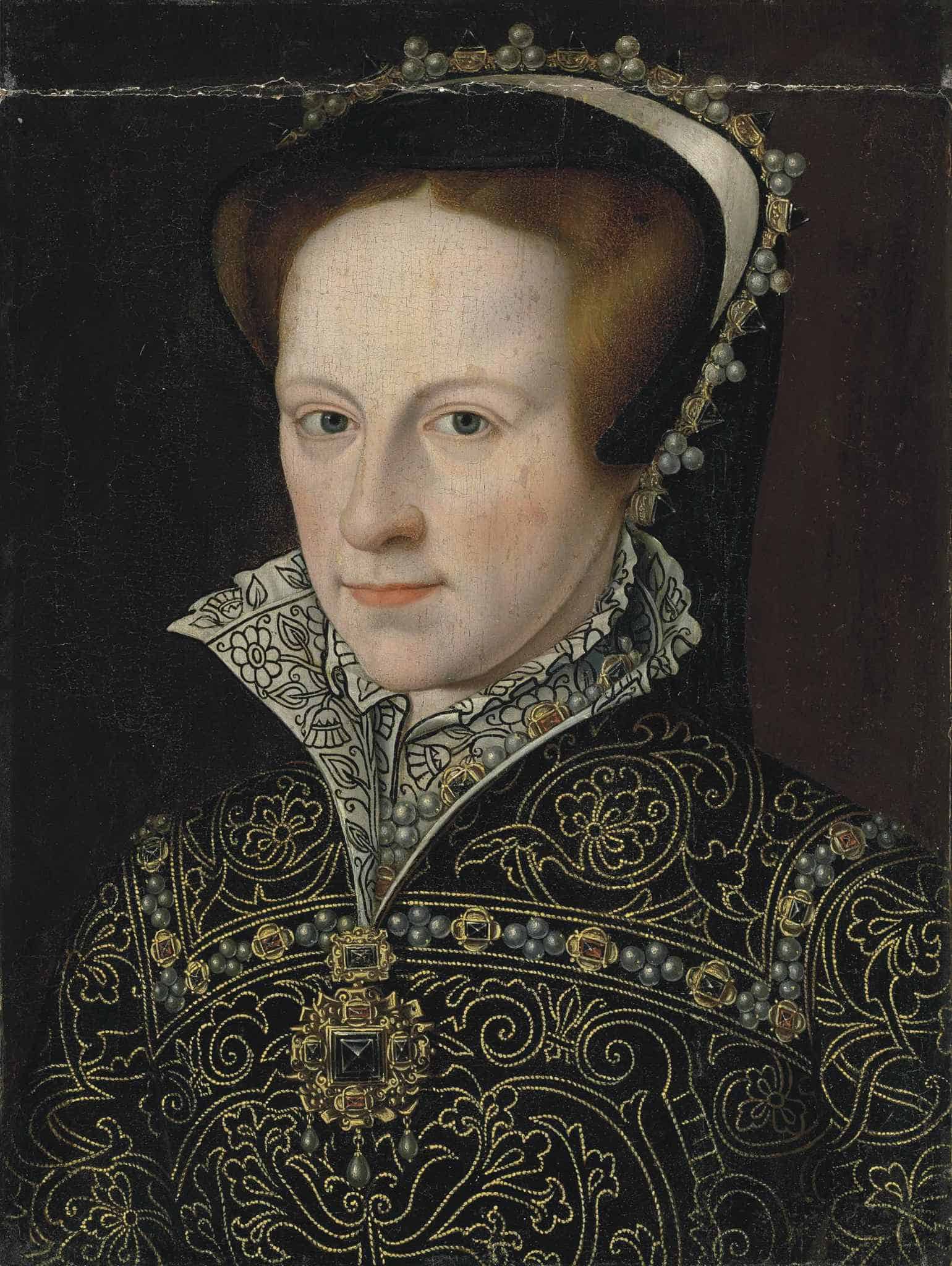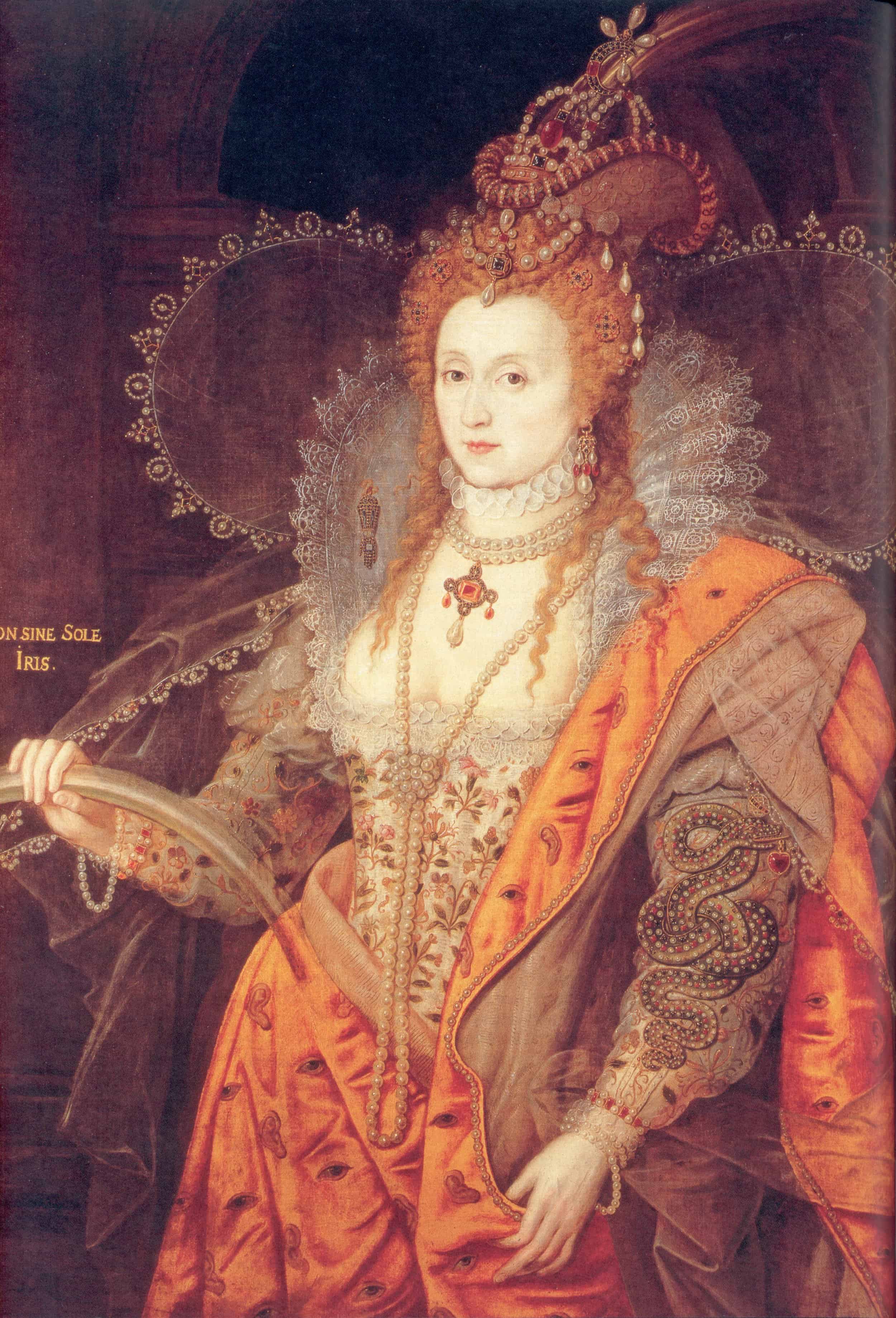Key Facts & Summary
- The house of Tudor is the royal house that ruled in England from 1485 to 1603.
- The Tudor monarchs were Henry VII (1485-1509), his son Henry VIII (1509-1547), and the latter’s three children Edward VI (1547-1553), Mary I (1553-1558), and Elizabeth I (1558-1603).
- The Tudors were a family of Anglesey, Wales, of no great power but with a long family history. A member of the family, Owen Tudor, married the widow of Henry V. Their eldest son, Edmund, Earl of Richmond, married Margaret Beaufort, member of a family which illegitimately descended from John of Gaunt, Duke of Lancaster, and son of Edward III, and which had later been legitimised but excluded from the royal succession.
- As the Wars of the Roses between the houses of Lancaster and York drew to a close, Margaret Beaufort came to have the only surviving Lancastrian claim to the throne. The son of her marriage to Edmund Tudor mounted the throne as Henry VII.
- The Tudor line was one of the most vigorous produced by England. Their greatest achievement was to rally the forces of the English people under a well-organised monarchy so that England was able to take its place a strong national state.
- The last Tudor monarch, Elizabeth I, was succeeded by her cousin, James VI of Scotland, who ascended to the English throne as James I and begun the reign of the Stuart line.
Henry VII
Henry VII was the first Tudor king of England. He was born in Pembroke Castle in Wales, on January 28, 1457. Through his mother he could trace his descent from John of Gaunt, son of Edward III. In 1471, he was taken to Brittany by his uncle Jasper Tudor to protect him from the victorious Yorkists led by Edward IV. Henry’s attempted invasion of England in 1483, made to enforce his claim to the throne, failed, but in 1485, he defeated and killed Richard III at the battle of Bosworth. After his coronation as the first king of the house of Tudor, he married Elizabeth, daughter of Edward IV, and so attracted the loyalty of many Yorkists. Though he had to meet the revolts of Lambert Simnel and Perkin Warbeck, his reign proved successful in many ways. He brought the surviving nobles to heel, partly by vigorous use of the Star Chamber; he established order and security and so obtained the support of the rising middle and merchant class. He married his daughter Margaret to James IV, king of Scotland, and his son to Catherine of Aragon, thereby gaining increased recognition of his new dynasty; he kept peace and piled up a large financial reserve. Interested in the new learning, astute in diplomacy, he was not too popular as a monarch. He died in Richmond (in Surrey) on April 21, 1509.
Henry VIII
Henry VIII’s break with the Pope led to the founding of the Anglican Church. He was born on June 28, 1491, at Greenwich. The death of his elder brother Arthur (1502) made him the heir to the throne which he ascended on April 21, 1509. Soon after his ascension, he married Catherine of Aragon, his brother’s widow. Between 1510-1514, Henry was involved in the war between France and Spain; and between 1512-1513, he took part in the war between France and Scotland. The war gave Henry his first great minister, Cardinal Thomas Wolsey, who, starting in 1515, held all the strings of power in state and church. Henry never lost ultimate control of affairs, but he was content to follow Wolsey’s lead. Henry preferred hunting, games, masks, mistresses, and music to the painful drudgery of government. Wolseys’ policy led through the triumph of a European peace embodied in the Treaty of London (1518). Meanwhile, by 1527, Henry was determined to get rid of his wife, His chief motives were two: a passionate attachment to one of the court ladies, Anne Boleyn; and his fear for the succession. Henry was seeking a declaration of nullity: Wolsey failed to secure papal consent to the king’s demands and in 1529, the Cardinal completely lost his power. Thomas Cromwell ensured the king his success by throwing off the pope’s authority altogether and creating a national Church of England under the supreme leadership of the king himself. Henry divorced from Catherine. Such resolution caused the dissolution of monasteries, and promoted the rise of Protestantism. However, difficulties over what was the true faith ended with the adoption of the orthodox Act of Six Articles (1539) and a careful holding of the balance between extreme factions after 1540.
Meanwhile, Anne Boleyn, who had managed to produce only a daughter, had been executed in May 1536, on charges of adultery. In 1536, Henry chose Jane Seymour, who died within a year, providing the desired male heir.
In January 1540, Thomas Cromwell’s Protestant policy involved the king’s marriage to Anne of Cleves, whom Henry disliked from the start and soon divorced. In August 1540, Henry made a love match with Katherine Howard, executed in 1542 for proven adultery. Finally in 1543, he settled for a more placid consort, Catherine Parr. By this time the vigour of Henry VIII’s person and reign was declining. The king died on January 28, 1547.
Edward VI
Edward was the king of England and Ireland. He was born at Hampton Court on October 12, 1537. He was the son of Henry VIII and his third wife, Jane Seymour. Though frail in health, Edward received a strenuous and excellent education, from Roger Ascham and Sir John Cheke. He succeeded his father as king in 1547 but played little part in the government. The power was in the hands first of his maternal uncle, Edward Seymour, Duke of Somerset, and then of John Dudley, Duke of Northumberland. Under their rule, with Edward’s complete approval, Protestantism was established in England, and the first English prayer book and forty-two articles of the Church of England were published. Edward’s will, made under Dudley’s domination, attempted to prevent the accession of Henry VIII’s daughters, Mary and Elizabeth, and to establish the claim of Lady Jane Grey, great-granddaughter of Henry VII. Edward died of tuberculosis at Greenwich on July 6, 1553.
Mary I
Mary Tudor was also nicknamed as ‘Bloody Mary’. Born in Greenwich on February 18, 1516, she was the daughter go Henry VIII and Catherine of Aragon. As a child, she received a thorough education in Classic and modern languages . In 1526, it was proposed that she should marry the French king Francis I; in the course of discussion, the question of the legality of her mother’s marriage and therefore of her legitimacy was raised. The final result was the annulment in 1533 of Catherine’s marriage and the separation of mother and daughter.
With the death of her mother, and the execution of her enemy, Anne Boleyn, Mary’s situation was much improved; she made formal submission to her father’s views and for the rest of his reign, had a household suited to her rank. When Henry died in 1547, she was placed by his will next in succession to the throne after her brother Edward VI and his children. Though she had her difficulties under the Protestant government of Edward VI, she was not badly treated, and in 1553 succeeded him as a monarch of England, having defeated the attempt of the Duke of Northumberland to place Lady Jane grey on the throne.
When she came to the throne, people sympathised with her and she was popular; her restoration of the papal supremacy and the Roman Catholic faith diminished that popularity. However, her marriage with Philip II of Spain, which incited Sir Thomas Wyatt’s rebellion, was much disliked and the severity with which she persecuted the Protestant minority aroused great discontent. Personally, she was not very attractive, and she was desperately hurt by the facts that her husband cared little for her and that she had no son. In 1557, to aid Spain, she involved England in a war with France, and her unpopularity was much increased by its failure and the capture of Calais, England’s last possession of the Continent. She died in London on November 17, 1558. Her policy in ruins at home and abroad, her reign was an utter failure.
Elizabeth I
Elizabeth was born at Greenwich Palace on the Thames River on September 7, 1533. Her father was Henry VIII, her mother Anne Boleyn. In order to marry Anne, the king had to divorce Catherine by breaking with the papacy. Elizabeth may thus be regarded as the child of the English Reformation, and this role shaped her whole future.
Elizabeth was given a rigorous Renaissance education by brilliant young Cambridge humanists, of whom the best known was Roger Ascham. The future queen was precocious, highly intelligent, and studious by temperament. Her knowledge of languages, both classical and modern, as well as her historical and theological reading were vital in her success as a ruler, enabling her, for instance, to converse with foreign ambassadors and to keep personal control of England’s diplomatic affairs.
The reign of her half-sister Mary Tudor (1553-1558) threatened her life. In fact, Mary was a Catholic zealot, Spanish in her sympathies, and suspicious and resentful of Anne Boleyn’s daughter. Though Elizabeth conformed outwardly to the established Catholic religion, she inevitably became the hope of the Protestant cause and therefore a menace to Mary’s safety. Arrested and sent to the Tower of London, Elizabeth was not executed only because of the lack of conclusive evidence against her. Elizabeth succeeded to the throne on November 17, 1558. Her accession was enthusiastically welcomed, especially by the citizens of London and by all Protestants.
The Queen proved ready to sever the English church once more from Rome and the papacy. Statesmen and Parliament were gravely concerned with securing the Protestant future of the country, since Elizabeth was the last of the Tudors. They pressed her to marry, but the choice of a husband was so difficult and perilous that marriage proved impracticable. Through both choice and politics she remained England’s Virgin Queen.
In 1561, after the death of her husband Francis II of France, Queen Mary of Scots returned to her native land, and the personal relations of the two queens started their complicated, controversial history. When Mary abdicated her throne of Scotland, she attempted to find refuge in England. However, she was locked in the Tower of London for almost twenty years on the accuse of having attempted to murder Elizabeth. Queen Mary was executed.
Mary’s death stimulated the Catholic Enterprise against England, sponsored by the Pope and executed by Spain/ Sir Francis Drake’s destruction of Spanish shipping at Cadiz in 1587 delayed the attack; but in the late summer of 1588, the Spanish Armada sailed: its purpose was that of overwhelming the English fleet and cover the landing of a Spanish army from the Netherlands. In one of the decisive naval battles of history, the ‘Invincible’ Armada was defeated and dispersed. Forced to return to Spain by sailing around Scotland and Ireland, it lost heavily by storm and shipwreck.
Although the war between Spain and England was never formally declared, open conflict between the two countries continued, with the English fleet and private adventurers making occasional forays against Spain and its dominions.
Elizabeth died in her seventieth year at Richmond Palace, Surrey, in the early hours of March 24, 1603.
Bibliography
[1.] Hanson, M. (2015). Henry VII Facts and Information Biography.
[2.] Hartweg, C. (2012). Edward VI – Growing into his own. All Things Robert Dudley.
[3.] Tremlett, G. (2018). From allies to enemies: Queen Elizabeth and king Philip. National Geographic Channel. [online] Available from: https://www.nationalgeographic.com/archaeology-and-history/magazine/2018/07-08/history-queen-elizabeth-king-philip-rivalry/
Image sources:
[1.] https://upload.wikimedia.org/wikipedia/commons/3/30/Tudors.JPG
[2.] https://upload.wikimedia.org/wikipedia/commons/8/80/London_Hoefnagel%27s_Map_of_1572.jpg
[3.] https://upload.wikimedia.org/wikipedia/commons/e/e9/King_Henry_VII.jpg
[4.] https://upload.wikimedia.org/wikipedia/commons/c/c6/Henry_VIII_National_Maritime_Museum.jpg
[5.] https://upload.wikimedia.org/wikipedia/commons/4/4f/Edward_VI_of_England_c._1546.jpg
[7.] https://upload.wikimedia.org/wikipedia/commons/c/cf/Elizabeth_I_Rainbow_Portrait.jpg

